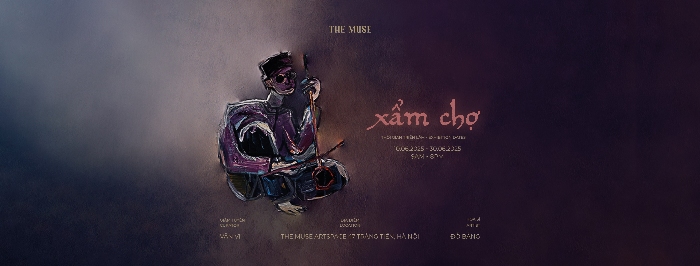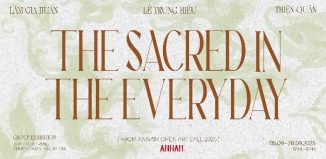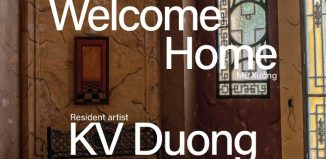Exhibition “Xẩm Chợ”

Opening: 06 pm, Tues 10 June 2025
Exhibition: 09 am – 08 pm, 10 – 30 June 2025
The Muse Artspace
47 Tràng Tiền, Hoàn Kiếm, Hà Nội
From the organizer:
Artist Do Bang is a man of olden ways. When he raises his voice in song, one can hear in it the essence of Bắc Ninh culture—a place where music and language are interwoven, inseparable. Bắc Ninh folk songs often seep into each individual like an underground current—a spirit of the land, once the royal homeland of the Lý dynasty, and one of the richest cultural regions in Vietnam.
In learning about Do Bang, I wandered through many rural corners of Bac Ninh, joined village festivals, and visited the homes of local people where simple gatherings of “liền anh” and “liền chị” took place, singing call-and-response melodies together. These meetings may seem modest, yet in their costumes, in the rhythm and lyrics, in the way each word is stretched, delivered with affection and care, there lies a deep awareness of cultural preservation.
Do Bang’s paintings are steeped in the rustic spirit of Bac Ninh—a proud simplicity—expressed through a bold, fauvist palette that resists harmony. Sharp greens like young banana leaves, gentle pinks like the dresses worn by “quan ho” singers, are not blended for brilliance but for balance, evoking a quiet tenderness and heartfelt concern for old tales. At times, it is the story of an elderly “xam” singer strolling through the village, children gathering around him with innocent faces to listen. At times, it is the romantic exchange between “liền anh” and “liền chị”, their faces not shown clearly, but their graceful postures alone capture the sentiment of this cultural region.
Do Bang’s brushwork is natural. He shapes forms with firm, confident strokes, as though capturing life through intuition more than calculation. The figures in his paintings are always clear in motion, yet never rigid—instead, they carry a soft and unpolished expression. There is something familiar and full of life in each form. Do Bang does not paint anything specific; rather, he paints the very soul of Bac Ninh as it lingers vividly in his memory.
His work belongs to the expressionist and fauvist schools. But what sets him apart most is the essence of Bac Ninh itself—a cultural identity that permeates his colors, forms, and brushstrokes. There, one sees not only art, but memory, humanity, and a land narrating its own story through the language of color and line.
Follow updates on event’s page.













